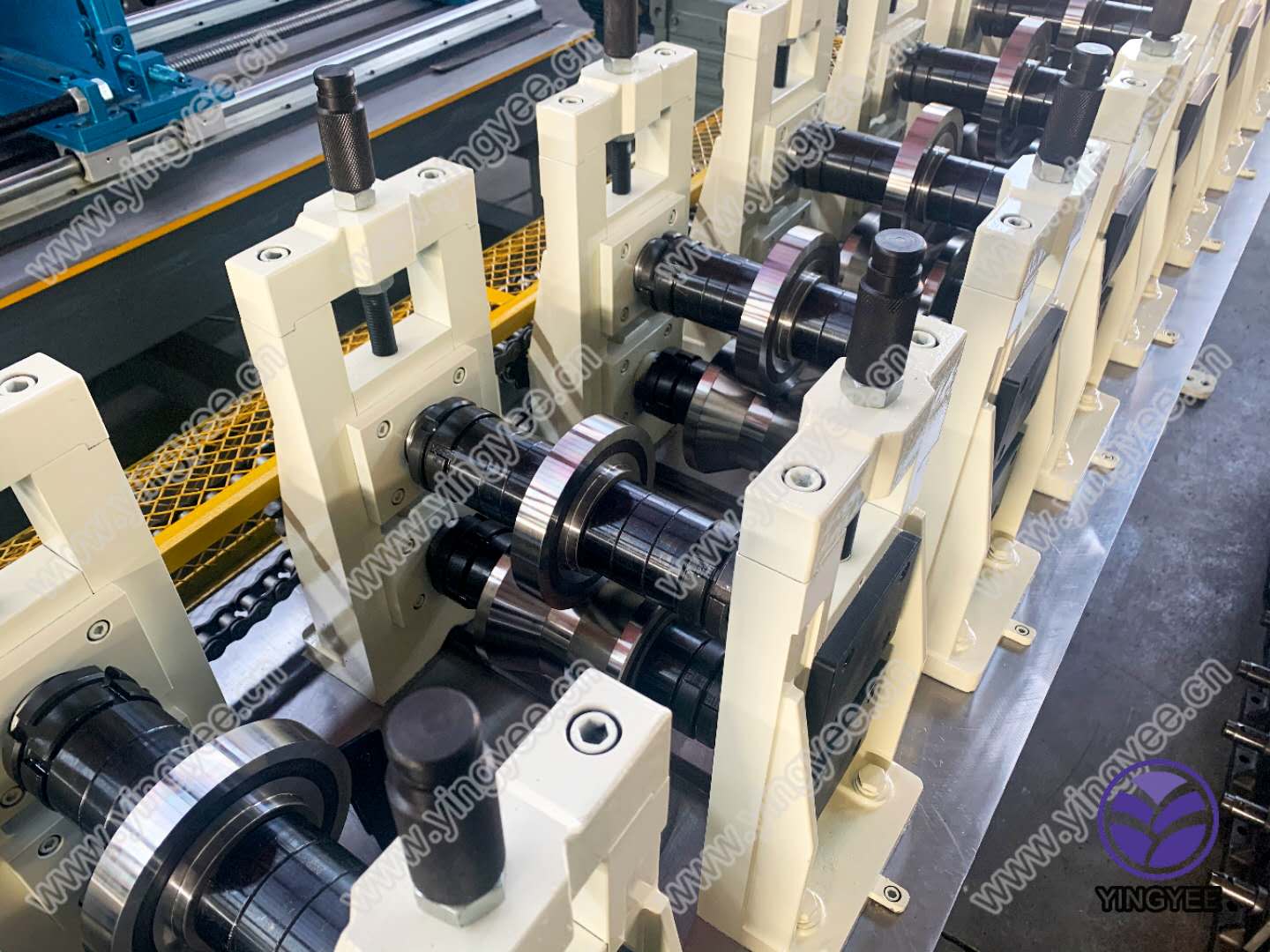
Automatic Adjustment of C Z-Purlin Sizes in Roll Forming Machines
In the modern construction and manufacturing landscape, efficiency and precision are paramount. One of the innovations that have significantly enhanced these aspects in the production of structural components is the development of automatic adjustment systems in C Z-purlin roll forming machines. Purlins, which are horizontal structural members used to support the roofs and walls of buildings, come in various sizes and shapes, primarily C and Z profiles. The ability to automatically adjust these sizes in roll forming machines offers substantial benefits in terms of productivity, cost-effectiveness, and design flexibility.
Understanding Roll Forming Machines
Roll forming is a continuous process that shapes metal sheets into desired profiles by passing the material through a series of rollers. This method is particularly effective for producing long lengths of uniform profiles, making it ideal for C and Z-purlins that often span considerable distances in construction applications. Traditionally, changing the size of purlins required manual adjustments, which could be time-consuming and prone to errors. However, advancements in technology have enabled the integration of automatic adjustment systems in these machines, revolutionizing the manufacturing process.
Automatic Adjustment Mechanism
The core of an automatic adjustment system lies in its ability to modify the machine settings without the need for manual intervention. This is achieved through a combination of servo motors, sensors, and a programmable logic controller (PLC). When a new size is required, the operator simply inputs the specifications into the machine’s control interface. The PLC processes the information, activating the servo motors that adjust the rollers, cutting tools, and other components to the specified dimensions.
One of the most significant advantages of this technology is its speed. Traditional systems could take hours to switch from one size to another, often resulting in downtime that could be costly for manufacturers. In contrast, automatic systems can make these adjustments in a matter of minutes, thereby increasing overall production efficiency.
Benefits of Automatic Adjustments

2. Improved Accuracy Automatic systems minimize human error, ensuring that the dimensions of the purlins are precise and consistent. This is critical in construction, where exact measurements are essential for structural integrity.
3. Flexibility The ability to switch between different sizes seamlessly allows manufacturers to cater to a diverse range of client needs. This adaptability is especially beneficial in markets with fluctuating demand.
4. Cost Savings Although the initial investment in an automatic roll forming machine may be higher than traditional equipment, the long-term savings from reduced labor costs, lower material waste, and increased production capacity often outweigh these initial expenditures.
5. User-Friendly Operation Modern machines are equipped with intuitive interfaces that allow operators to quickly learn how to operate them and understand the adjustment processes, further streamlining operations.
Environmental Considerations
In addition to operational benefits, automatic adjustment systems can contribute to more sustainable manufacturing practices. By optimizing material use and reducing waste associated with incorrect sizing, these machines can help minimize the environmental footprint of production operations.
Conclusion
The advancement of automatic adjustment systems in C Z-purlin roll forming machines marks a significant leap forward in manufacturing technology. As the construction industry continues to evolve towards more efficient and sustainable practices, the demand for such innovative solutions is likely to grow. Manufacturers willing to invest in these systems can expect to see not just improved productivity and cost savings, but also increased competitiveness in an ever-demanding market. In summary, the fusion of automation with traditional roll forming processes represents a pivotal step in the journey towards smarter, more efficient production methods in the building materials sector.